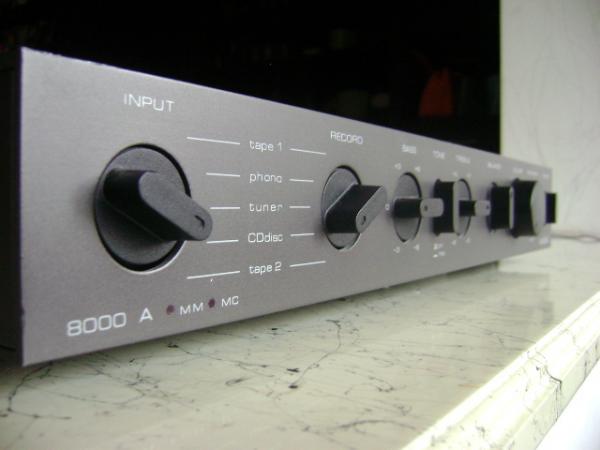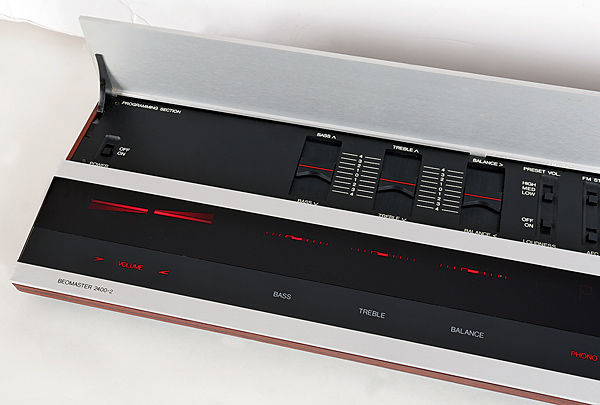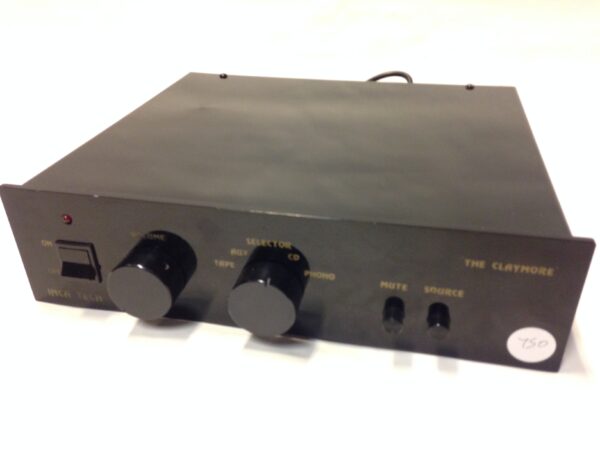Creek has long been the king of low-cost British integrated amplifiers. The CAS4040, for example, is a delightful listen and one of the nicest things any wannabe audiophile could afford back in the day. It featured a rich, gripping sound that was detailed and melodic, and it delivered a lot of bang for your buck. This new Evolution 50, released three decades later, strives to give the same acoustic attributes, but with a lot more going on. It was nearly impossible to have alphanumeric displays, remote controllers, electronic switching, and lighted fascia buttons in the 1980s. Nowadays, though, it appears that you can have it all — or can you?
This modular design costs £700 and has an expansion slot that can accommodate three Creek plug-in Sequel Phono modules (40, 48, 54dB MM or MC), an Ambit FM/AM tuner module, or a Ruby DAC module. With standard issue Brit-fi black steel casework (430x60x280mm, 7.5kg) and robust (black or silver) aluminium fascia, it’s adequately built for its budget. Backlit buttons are a wonderful addition, and they go well with the OLED (Organic Light Emitting Diode) display, which is defeatable and has adjustable brightness. Overall, the product performs admirably.
Inside is a powerful 200W toroidal mains transformer with separate windings for both high and low current analogue, as well as digital circuitry, as you’d expect from a brand that takes sound seriously. Creek claims that using smaller, parallel power supply smoothing capacitors rather than a single larger one helps to produce a highly powerful sound from such a compact amplifier. The David Gamble Class AB design is all-discrete and features a high-end bipolar transistor power amplifier circuit with a pair of 15 Amp Sanken STD-03 bipolar power transistors, which is probably unusual. This is said to generate extremely high output current and low output impedance.
The preamplifier portion is based on a Japan Radio Corp module and includes unbalanced or balanced inputs, various RCA input options, volume, balance, and tone controls, and may be bypassed completely if you have a DAC with a digital volume control and are inclined that way. Unfortunately, Creek no longer produces an FM tuner, but that Ambit radio board essentially converts it into a receiver for just a few pounds more, and Mike Creek claims this is more than an afterthought. A system remote is included.
This won’t burn a Krell-sized hole in your loudspeaker voice coils, with a claimed output power of just 55W (into 8 ohms). But don’t let this put you off; amplifier power is just half of the equation when it comes to ‘loudness,’ and there are lots of efficient speakers (90dB sensitivity or above) that can create a lot of noise with a tiny amount of power these days. We’ve got something that sounds really clear and open – as a decent transistor amplifier should – but doesn’t sound unduly analytical or matter-of-fact.
Groove Armada’s Whatever, Whenever, for example, demonstrated how it was possible to be both unexpectedly transparent, brimming with detail and elegance, yet unerringly musical and rhythmic. The amp grabbed command of the song’s massive, thick bass guitar pattern, giving the low frequencies a wonderfully tactile feel without ever being overblown or under damped. The Creek provided a wide, spacious midband further up the frequency band, which you could really listen to – indeed, you could unpeel it like an onion if you so desired. I found myself focusing on the backdrop synth string sound, from which I was able to easily go into the electronic backing and rhythms.
Nine Feet Underground by Caravan is a fast-paced track with lots of guitar noodling, furious stick work, and a wonderful, bouncing bassline, all finished off with an edgy sounding electric organ. Everything in the recorded acoustic was wonderfully set by the Evo 50, with each strand of the mix playing along unaffected by what was going on beside or opposite it. It managed to keep everything under strict control while also putting everything together in a really satisfying way. It was pretty strong rhythmically – not quite as good as the best tube amps, but it got right into the groove and conveyed the gloriously loose and floating vibe of this early seventies Canterbury classic.
This amplifier isn’t loud in tone; it lacks the ‘spot-lit’ upper midband that plagues so many similarly priced amplifiers. The Creek is far more balanced, with a beautiful smooth, all-of-a-piece feel that doesn’t require you to compensate for its flaws; it’s the kind of amp you could throw into a bright budget system and keep your sanity. Linton Kwesi Johnson’s In Dub, for example, is a delightfully bouncing bit of early eighties reggae that doesn’t win any smoothness awards, but the Creek makes the most of it without lingering on the recording’s brightness. Cue on Peter Gabriel’s Solsbury Hill, and that muddy-sounding 1970s rock gem doesn’t hide its light under a bushel, the Creek being just seeking enough to truly pull the recording out.
It’s rare to find such delicacy of touch and lack of inherent coloration in an amplifier of this price range, and it pushes you past the point where you’re continually making excuses. Why would you ever need to pay more than £700 on an amplifier that is so faultless in the grand scheme of things? Of course, it isn’t a universal panacea, and while it will cause problems for a variety of other amplifiers costing up to twice as much, it, too, is mortal. In absolute terms, the Evo 50 lacks bass heaviness; low frequencies sound robust and crisp, but no sensation of an iron fist is there. When things get extremely complicated and a lot of things are required of the amplifier’s power transistors and supply, you start to hear its fallibility at high levels and crescendos. After all, it’s only a 50 watt model.
In the grand scheme of things, though, these flaws won’t deter you from buying the Creek because the overall sound quality is so good for a sub-£1,000 amplifier. Furthermore, it effectively hides its tracks, so even when you’re pushing it a little too hard, demanding a little too much of it, it shows grace under pressure. Almost any type of music you play comes out satisfyingly rhythmic, with a surprising amount of detail and elegance. It doesn’t get any fairer than that!







